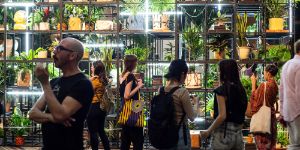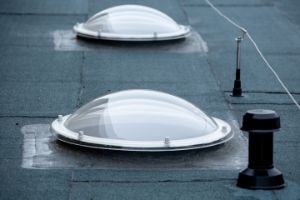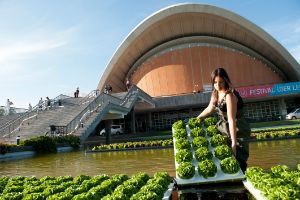Institutional Measures

Rashid Johnson, “Antoine’s Organ” (Detail), 2016 Photo: Mathias Völzke, courtesy: the artist and Hauser & Wirth
Sustainable Environmental Management
at the Berliner Festspiele
How does the art world contribute to worldwide climate change? And can culture be produced more sustainably?
Every year the Berliner Festspiele welcome large numbers of guests to Berlin, both artists and members of the public. Its programmers travel the world, making contacts, identifying global trends and viewing new works; their work often involves travelling by air for tens of thousands of miles. The unimagined number of kilowatt hours required to operate the lighting and air conditioning systems and the millions of litres of water used by the buildings’ sanitation facilities clearly show that the presentation of art consumes considerable resources.
How can organised culture be made more sustainable? For many years now, the Berliner Festspiele along with their umbrella organisation KBB (Kulturveranstaltungen des Bundes in Berlin GmbH) have been working to improve their own environmental impact. This applies both to the conception and execution of their programmes and also to the usage of the two buildings – the Haus der Berliner Festspiele as a theatre and venue for a multitude of events and the Gropius Bau as an exhibition house. They achieved EMAS certification in 2013. Developed by the European Union, EMAS (Eco-Management and Audit Scheme) is an ambitious system of sustainable environmental management that, among other measures, obliges organisations to set environmental targets and to conduct annual internal and external audits.
Here we present samples of the measures that the Berliner Festspiele are currently working on, plans that have already been implemented and projects where the theme of sustainability has featured particularly strongly.
Contact
Christoph Hügelmeyer (Technical Director of KBB and Environment Management Officer)
+49 30 26 397 444
christoph.huegelmeyer@kbb.eu




